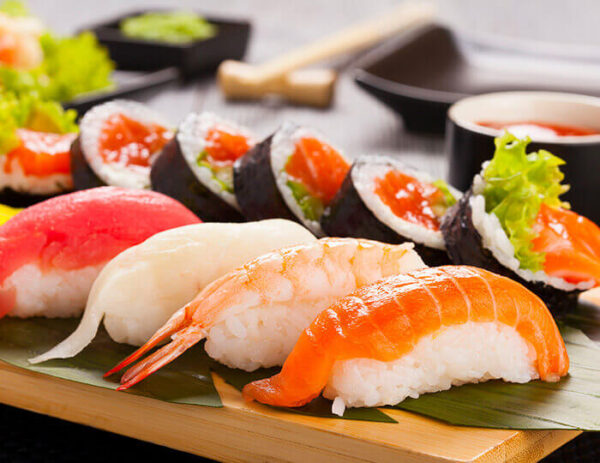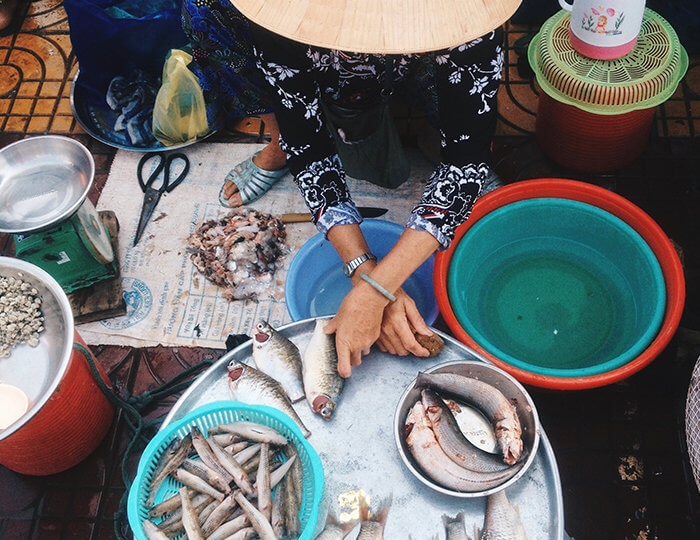NEWS • 2023-11-22
The way forward – applying circular economy principles to aquaculture
In a circular economy, wastes are minimized, and resources are used more efficiently and responsibly. A new study shows how the adoption of circularity principles in aquaculture can reduce the environmental impacts of farmed aquatic foods. It takes a broad systems perspective and highlights the importance of prioritising the production of species that contribute to food and nutrition security, have low environmental impacts, as well as avoid feed-food competition in aquaculture.

A circular economy is considered one way to reduce environmental impacts of human activities, by more efficient use of resources and recovery, resulting in less waste and emissions compared to linear take-make-dispose systems. Earlier research has developed five ecological principles to guide biomass use towards a circular economy, but to date, these principles have not been explored in aquaculture.
Principle 1 – Safeguarding and regenerating the health of agro and aquatic ecosystem
Principle 2 – Avoiding producing non-essential products and wasting those are essential
Principle 3 – Prioritising biomass streams for basic human needs
Principle 4 – Using and recycling byproducts of agro- and aquatic ecosystems
Principle 5 – Using renewable energy while minimizing overall energy use
In a recent article in Reviews in Aquaculture, a team of international experts, including Beijer Institute researchers Patrik Henriksson and Max Troell, provides a state-of-the-art view of the current implementation of circular economy concepts in global aquaculture.
“We show that the underlying concepts of principle 1(safeguard), 4 (recycle) and 5 (energy) have been well researched and sometimes well implemented. In contrast, principle 2 (avoid) and 3 (prioritise) have been explored much less. Exploring these would provide an opportunity to decrease environmental impacts and optimize resource use of aquaculture at the food-system level”, the authors say.
The study identified six priorities for transforming aquaculture according to circularity principles:
- Increase production and demand for the most essential species
- Decrease food loss and waste at farm and post-harvest stages
- Support nutrient recycling practices at multiple scales
- Adapt aquafeed formulation with non-food competing ingredients
- Inform consumers about benefits of species of low trophic levels and other environmentally friendly aquatic foods
- Adress urgent research gaps
Avoiding impacts by focusing on the most essential species
Aquaculture species are far from equal in terms of nutrition supply, contribution to food security and environmental footprints. The authors show that from a nutritional and food security perspective, most essential aquaculture species are cheap species produced in large volumes that target low-income consumers in the Global South. In contrast, luxury species feed mainly healthy and wealthy populations in the Global North and most often require disproportionate resource use.
The study shows that wasteful resource use and environmental impacts could be avoided by shifting toward low-impact and equally healthy alternative aquatic species such as bivalves, and freshwater carp. These diet changes are particularly needed in the Global North, where most of the luxury niche species are produced and consumed.
Reducing impacts by avoiding feed food competition
The study claims that eliminating feed-food competition would require a decrease in fed aquaculture, perhaps most in regions that rear species of medium-to-high trophic level, such as Europe, Oceania, and the Americas.
“Food should go to humans, not animals. Yet a large part of aquafeeds is composed of resources that are or could be human edible. Prioritising food to humans and feeding aquaculture animals with food system by- and waste products can increase global food supply and reduce environmental impacts”, says Patrik Henriksson.
“Making such shift possible would however depend on having efficient policy instruments in place” adds Max Troell.
Chary, K., A-J. van Riel, A. Muscat, A. Wilfart, S. Harchaoui, M. Verdegem, R. Filgueira, M. Troell, P.J.G. Henriksson, I.J.M. de Boer, G.F. Wiegertjes. 2023. Reviews in Aquaculture DOI: 10.1111/raq.12860
NEWS



